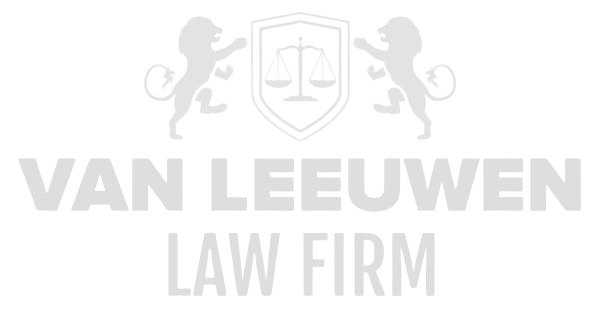Privacy agreements and transactions form the legal backbone for managing personal data in complex business and supply chain environments. When drafting such agreements, details must range from the purposes of data processing to the duration of storage and methods for destruction or anonymization. At the same time, organizations must map out the rights data subjects have for access, correction, or deletion of their data and the means available to exercise those rights. All of this must be done in compliance with applicable laws and regulations, such as the General Data Protection Regulation (GDPR) in the European Union, sector-specific provisions such as those in financial services (PSD2) or healthcare (HIPAA), and national supplements in the member states.
In global practice, negotiating privacy agreements often involves multiple parties: data controllers, processors, sub-processors, cloud providers, and industry association templates. Each party brings its own legal standards, risk profiles, and liability limitations. Legal teams must therefore be specialized not only in international data transfer mechanisms—such as adequacy decisions, model contract clauses, and binding corporate rules (BCRs)—but also in sector-specific standards and best practices for information security (ISO 27001, SOC 2). The absence of comprehensive agreements or inconsistencies between contractual clauses can lead to critical data flows being halted, liability claims arising, or regulators facing allegations of failing to monitor, significantly damaging service continuity and customer trust.
(a) Regulatory Challenges
Complying with various privacy laws requires legal professionals to constantly analyze new drafts of regulations and translate them into contractual clauses. Uncertainties around the definition of ‘processing personal data’ and the distinction from ‘anonymous data’ can result in contracts that provide insufficient protection. Legal teams must therefore conduct thorough impact analyses to determine which processing activities fall within the scope of the GDPR and which do not, creating both data flow diagrams and risk profiles.
Drafting adequate processor agreements involving sub-processors requires a multi-step iterative process. Each sub-processor must be assessed against the same security standards, such as encryption protocols and access control, and certified through independent audits. Legally guaranteeing audit and inspection rights within contracts requires explicit, unambiguous language, in which both ongoing rights of document access and on-site inspections are secured.
Data transfers to third countries without an adequacy decision require model contract clauses or BCRs. Negotiating such clauses takes time: legal experts must closely collaborate with compliance and IT teams to translate technical security measures—such as end-to-end encryption and key management—into contractual safeguards. Ambiguities regarding the scope of foreign authorities’ surveillance may lead to delays in finalizing agreements.
Sanctions and export control regimes add additional complexity when personal data is linked to sanctioned parties or regions. Compliance teams must equip contracts with automatic blocking mechanisms and clauses for the immediate suspension of data processing, linked to live monitoring systems for sanction lists. Failure to timely implement such conditions may disrupt crucial data flows or lead to criminal prosecution of directors.
Sector-specific addenda—such as specific provisions for health data under the EU Medical Device Regulation or biometric data under the ePrivacy Directive—often form additional contractual layers. Legal professionals must integrate these addenda without redundancy or contradiction with the main agreement. This requires iterative reviews and continuous alignment with external experts and authorities to ensure that all mandatory clauses work seamlessly together.
(b) Operational Challenges
Operationally embedding privacy clauses into IT systems requires that contract provisions are directly translated into technical specifications, such as automated data classification, access plugins, and retention engines. This requires close collaboration between legal and technical teams, with standard templates for database rules and API gateways needing to be available.
Contracts that define the rights of data subjects—such as the right to data portability or correction—retain their value only if operational processes exist to handle requests within legal timeframes. Service level agreements (SLAs) must explicitly define response times for privacy requests, linked to logging systems that document processing times and handling.
Managing audit trail requirements implies that every action on personal data must be logged with user IDs, timestamps, and the nature of the operation. Operational teams must select and configure tools that minimize both performance and storage impact, while ensuring that compliance analyses remain easily accessible to internal auditors and regulators.
For subcontractor management, operational procedures must ensure that new processors are only engaged after completing due diligence checklists, where contractual obligations are verifiably included. Go/no-go decisions are recorded in intake forms, linked to automated gatekeepers in procurement software.
Incident response training for data breaches should include scenarios around contract violations and negligence, including steps to limit contractual liability and trigger mitigation clauses. Operational playbooks must enable employees to quickly shift to the appropriate legal and communication teams, ensuring timely notifications to regulators and affected data subjects.
(c) Analytical Challenges
Analytical workflows for due diligence with new partners need to automatically compare contract data with risk models. Metadata from contract management systems should be enriched with scores for geographic and sectoral risks, so legal teams can prioritize the renegotiation of clauses in high-risk agreements directly through dashboards.
Integrating text mining and natural language processing (NLP) in contract analysis requires agreements to be tagged for critical clauses—such as liability limitations, penalty provisions, and termination grounds. Data scientists must train models on representative corpora of privacy agreements and continuously validate whether new clause variants are correctly identified.
Monitoring compliance with privacy clauses in real time requires analytical pipelines that combine audit logs, usage statistics, and incident data. Automated anomaly detection can identify deviations in data requests or export activities, alerting legal teams with contextualized alerts to initiate contractual actions.
Reporting systems for regulators and internal governance committees must translate analytical outputs into understandable KPIs—such as the percentage of processors without an up-to-date processing agreement or the number of data breach notifications per contract template. Data engineers and legal teams collaborate to define the proper aggregation and visualization rules.
Validating analytical tools for contract compliance requires periodic evaluations with manual sampling. This checks both the accuracy of NLP labels and the completeness of metadata. Discrepancies lead to adjustments in algorithms and retraining to ensure the quality of automated analyses remains at a high level.
(d) Strategic Challenges
Strategic alignment of privacy agreements with business goals requires contract portfolios to be categorized by strategic value, risk, and future agendas. Contract management platforms must offer functionalities for prioritizing and automating renegotiation cycles, ensuring that high-risk agreements are updated in a timely manner.
Investments in contract automation tools and clause libraries must be justified by a business case that quantifies potential savings in legal hours and risk reduction. C-level steering information should provide insights into ROI and time-to-value for the adoption of such tools.
Strategic partnerships with market-leading processors and cloud providers create a competitive advantage when they offer standard privacy clauses that have been verified through external law firm testing. This accelerates onboarding and promotes uniformity in contract terms within the ecosystem.
Building a culture around ‘contractual privacy excellence’ requires training legal and procurement teams, rewarding good use of advanced contract templates, and creating internal champions who spread best practices. This fosters a learning organization that can quickly adapt to new privacy requirements.
Continuous governance maturity assessments of contract practices—based on models like the IACCM Capability Maturity Model—help identify areas for improvement. Strategic roadmaps are thus supported by objective data on compliance strength, lead times, and quality indicators, enabling organizations to remain agile in a rapidly evolving privacy landscape.









